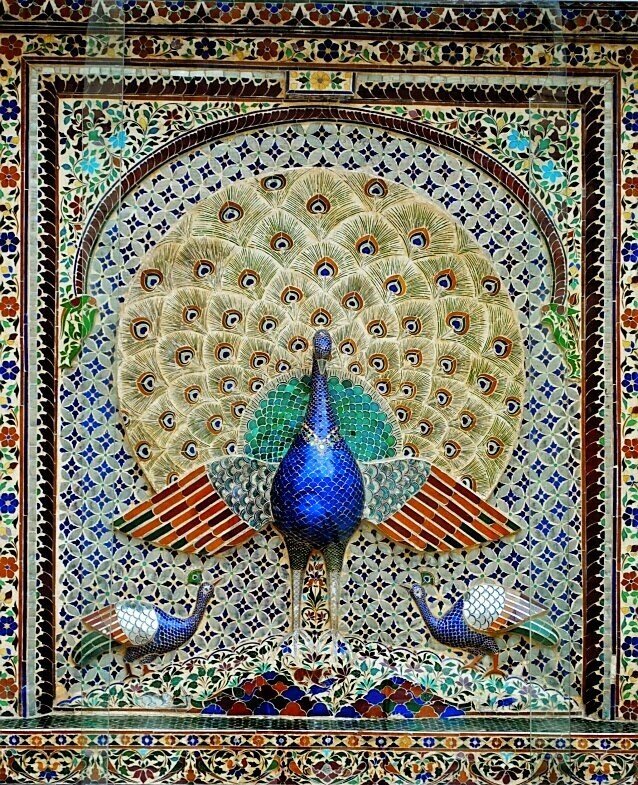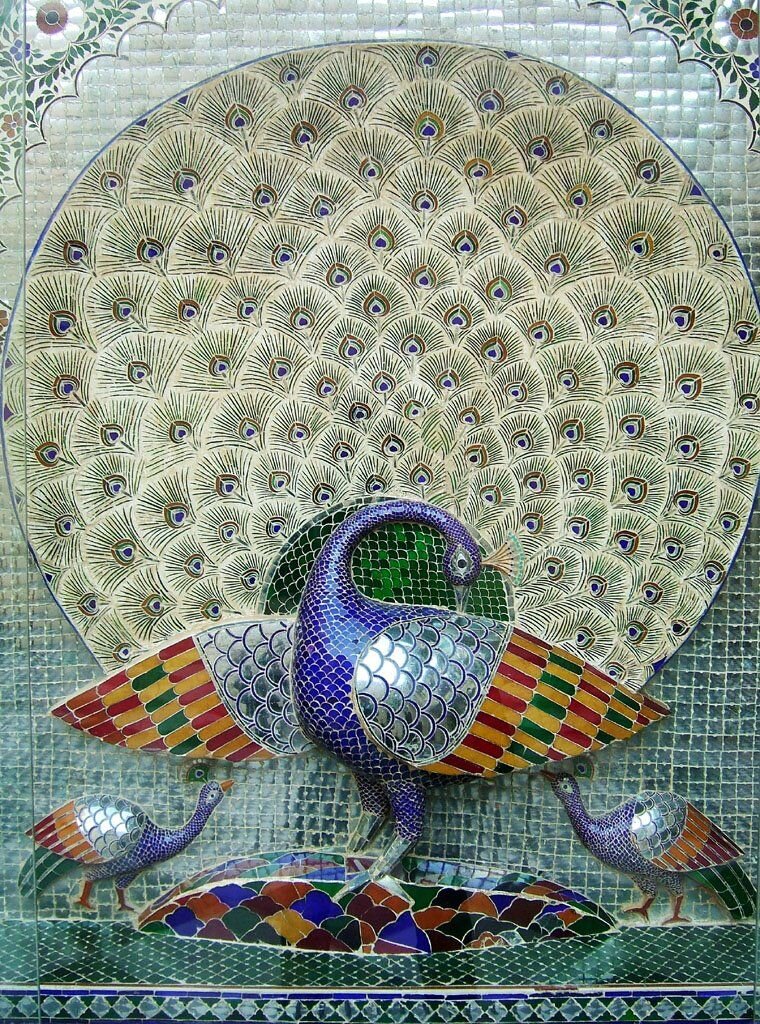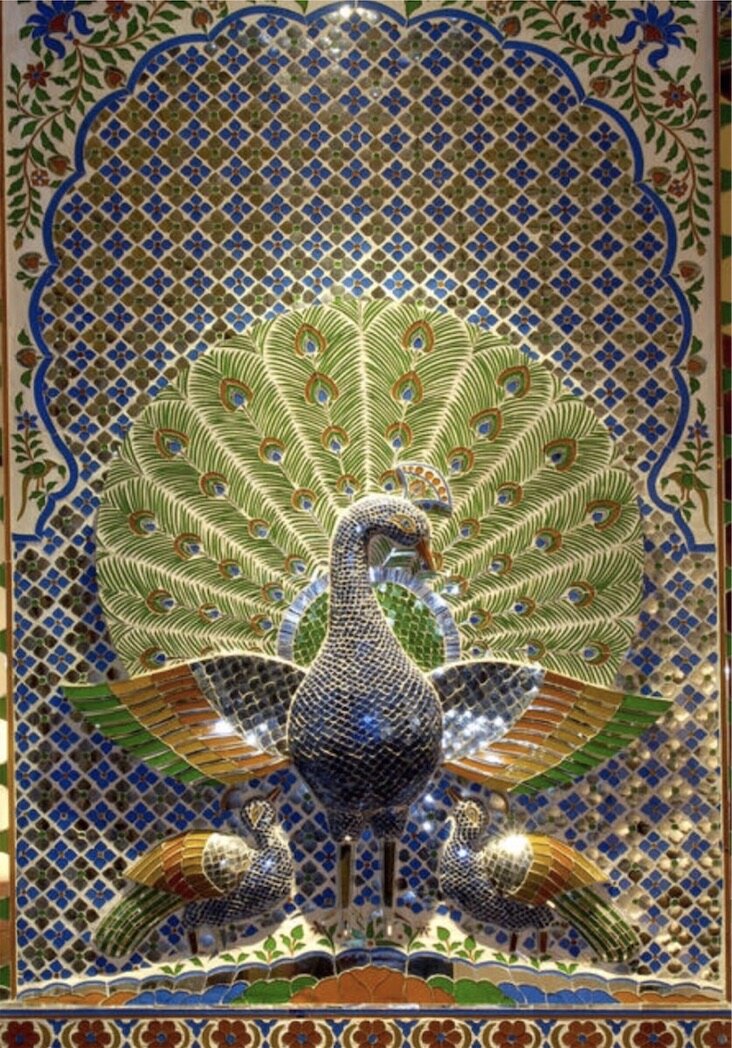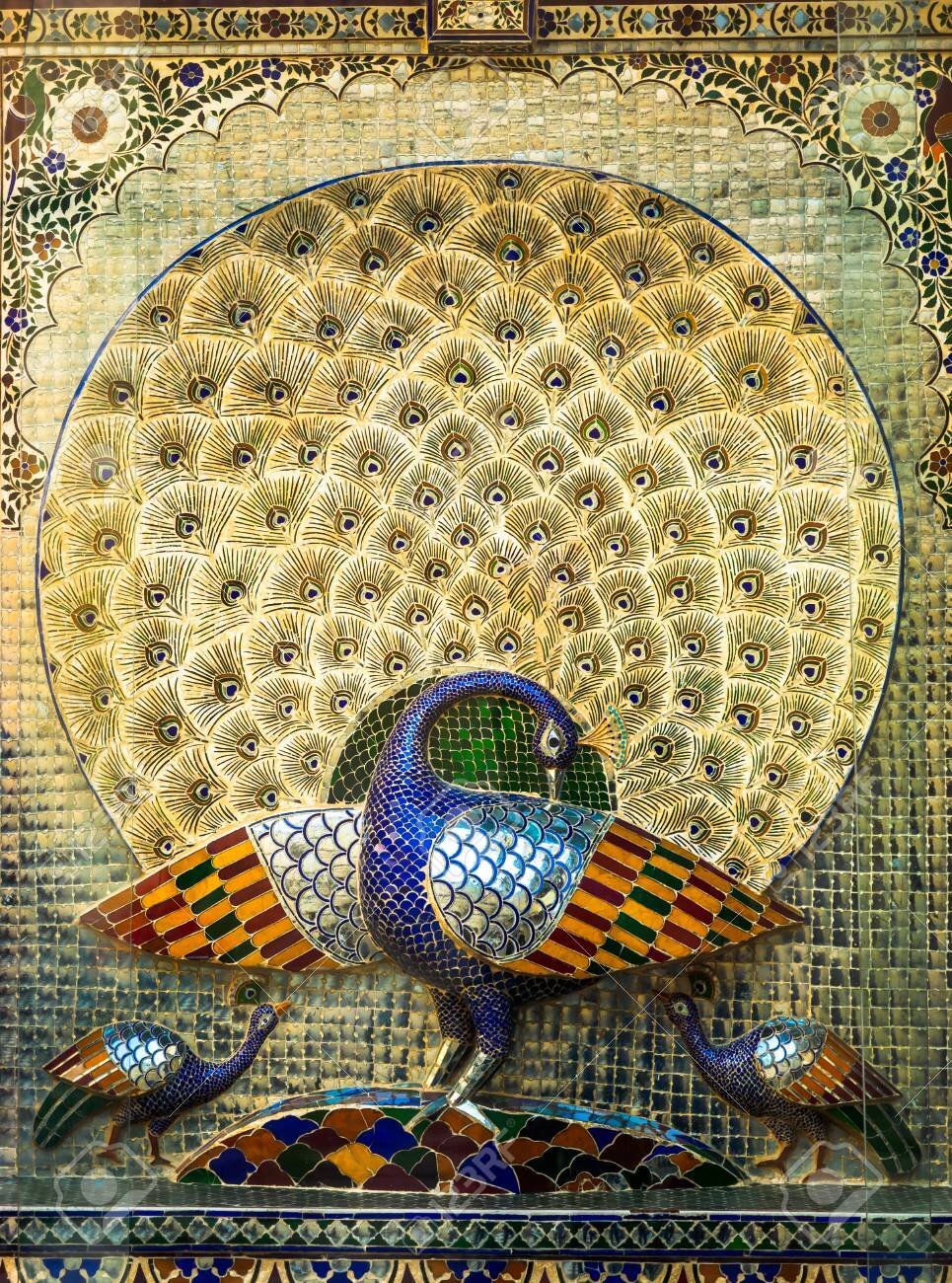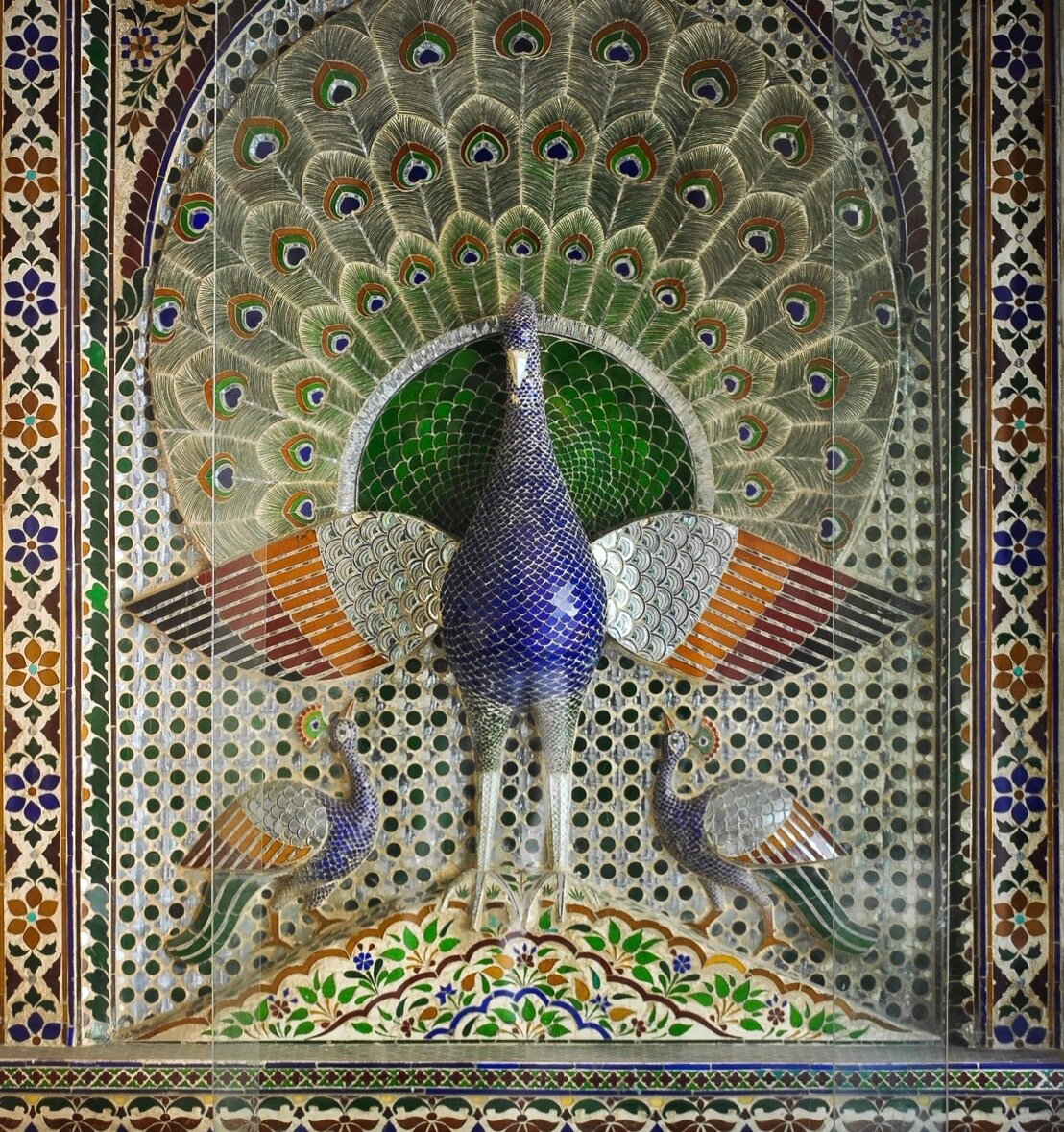Peacock Inspiration
For me, much of the joy in creating Omshala beaded designs is the opportunity to discover. During the process of developing the peacock beading, I stumbled upon an image of a peacock that captivated me. The peacock was unique with its perfectly rounded plume and its decor of colorful glass mosaics that shone brilliantly even in photographs. I was mesmerized by the beauty of this majestic bird, and was eager to learn about the significance of its reference, Mor Chowk. And so began a wonderful exploration where I spent time learning about the spectacular City Palace Udaipur, the largest palace of Rajasthan, and Mor Chowk, its crown jewel.
Construction of City Palace began in 1559 by Maharana Udai Singh II, of the Sisodia Rajput family, as he shifted his capital from Chittor to the newly established city of Udaipur. Over the next 400 years, succeeding rulers modified and expanded City Palace in a number of phases giving rise to a rich blend of architectural styles - Rajasthani, Mughal, Medieval, European and Chinese. Towering over the east bank of Lake Pichola, City Palace appears as one massive fort with its windowless walls, rising to meet tiers of balconies, towers, and domed kiosks. City Palace is actually 11 smaller palaces built in granite and marble and connected by a series of gates called pols. Within this complex are courtyards, pavilions, gardens and temples. Today the main portion of City Palace is preserved as a museum. Also housed in City Palace are two hotels and the residence of the Mewar Royal family.
Mor Chowk, or Peacock Court, is a private chamber within City Palace considered by many to be its most impressive feature. This open air courtyard, which was built by Maharana Sajjan Sin 200 years after City Palace was established, was often used to host dinner banquets for guests of the Royal family. Located along the east wall of Mor Chowk are three peacocks, elegantly displayed each within a separate niche. Set in high relief, the peacocks are crafted from 5,000 pieces of mosaic glass in green, blue, and gold colors with concave mirror accents. The peacocks represent the three seasons of summer, winter and monsoon. To catch a glimpse of the peacocks, their mosaic feathers resplendent in the morning sunlight, is breathtaking. I remember the day I received the first completed peacock beading from India. I unwrapped the beading and placed it in the sun on my front porch table. Seeing the peacock, its glass beaded plumes luminous, was nothing short of magical for me.


